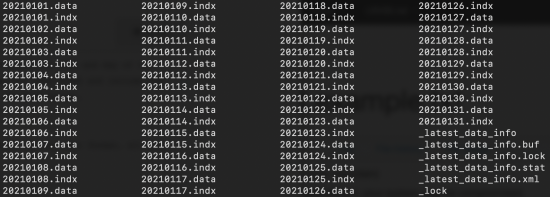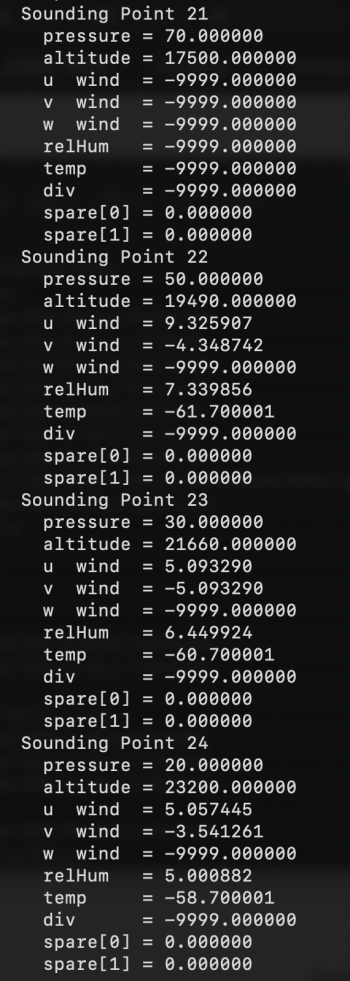Difference between revisions of "Storing soundings in SPDB"
From Lrose Wiki
| Line 32: | Line 32: | ||
<li>Use the application SpdbQuery to test that the data was converted properly using the following command.</li></ol> | <li>Use the application SpdbQuery to test that the data was converted properly using the following command.</li></ol> | ||
SpdbQuery -url /path/to/data/spdb -mode interval -start "2021 01 01 00 00 00" -end "2021 02 01 00 00 00" | SpdbQuery -url /path/to/data/spdb -mode interval -start "2021 01 01 00 00 00" -end "2021 02 01 00 00 00" | ||
| − | [[File:Spdbquery_results.png| | + | [[File:Spdbquery_results.png|350px]] |
Revision as of 18:31, 11 February 2021
Overview
Thermodynamic soundings are important in RadxPid because temperature helps distinguish between liquid and frozen hydrometeors. Soundings can be ingested into RadxPid in three ways:
- entered manually in the PID thresholds file - only one sounding is allowed.
- estimated from model output (Grib2toMdv, Mdv2SoundingSpdb) - this is the preferred method.
- observed sounding downloaded and converted from native format to SPDB - described below.
The second and third method both require data or output to be converted to an SPDB database file, which is a non-gridded file. This page describes how to convert Grib2 and TTAA/TTBB files to SPDB.
Model Output
TTAA/TTBB
If you would like to use observed soundings in RadxPid, LROSE has tools to convert TTAA/TTBB files into an SPDB database file. Operational soundings are also available online from the University of Wyoming.
A note of caution about using soundings over a period longer than a month. The TTAA/TTBB format is quite old and while the time and day of the month is encoded in files, the month and year are not. One way to get around this issue is to make separate files for each month and include the start date in the file name. For example, say you want to convert all soundings for Denver from January 2021 to the SPDB format.
- Download soundings from the University of Wyoming site. Select the raw text format, all data from 0000 UTC 01 - 1200 UTC 31 January 2021, and click on the DNR station.
- Rename the downloaded file 20210101_000000.denver_soundings.txt and note the path to the file.
- Download this parameter file that has the location and altitude data for every NWS sounding location.
- Modify line 1202 of the parameter file to set the desired path for the output.
- Run NWSsoundingIngest with the following command:
NWSsoundingIngest -params /path/to/NWSsoundingIngest.test -debug -f /path/to/20210101_000000.denver_soundings.txt
- This command should produce .data and .indx files for each date in January 2021.
- Use the application SpdbQuery to test that the data was converted properly using the following command.
SpdbQuery -url /path/to/data/spdb -mode interval -start "2021 01 01 00 00 00" -end "2021 02 01 00 00 00"
This data can now be used in RadxPid and RadxRate, after setting the PID_sounding_location_name parameter on line would be set as "72469", the Denver station ID. (In Mdv2SoundingSpdb.gfs, set with $(RADAR))
Other applications
CsuSounding2Spdb (CSU format sounding data)
BomSounding2Spdb (Australian Bureau of Meteorology sounding data)

